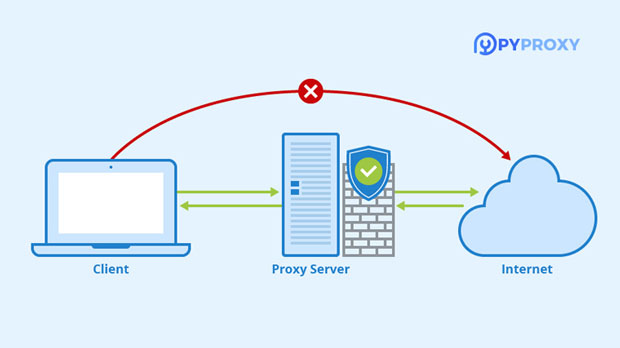In the realm of proxy servers, it is essential to understand the various protocols supported by the service to ensure compatibility with different applications and use cases. Among the most commonly used protocols are HTTP, HTTPS, and SOCKS5. PYPROXY is one such proxy service that offers various solutions for internet users seeking anonymity, enhanced security, or access to restricted content. This article delves into whether Pyproxy proxies support these three protocols: HTTP, HTTPS, and SOCKS5. Understanding their features and functionality can help users make an informed decision regarding their specific needs. Overview of Pyproxy Proxy ServicePyproxy, a proxy service designed to provide privacy, security, and anonymity for internet users, stands out with its versatile offering. Proxy servers are vital for masking a user’s IP address, offering safer browsing experiences, and allowing unrestricted access to geographically restricted content. They are often used for web scraping, accessing blocked websites, and improving internet security. When selecting a proxy service, it is crucial to evaluate the types of protocols supported as each one has its unique set of advantages.Among the most important protocols are HTTP, HTTPS, and SOCKS5. Pyproxy aims to provide seamless functionality across these protocols, ensuring that users can choose the one that best fits their needs. Let's dive deeper into each of these protocols and explore whether Pyproxy supports them.HTTP Proxy: Simplified and Widely UsedThe HTTP protocol is one of the oldest and simplest proxy protocols used in the internet industry. HTTP proxies are primarily used for web browsing, where they forward HTTP requests between the client and the server. This protocol is efficient for non-encrypted traffic and is particularly useful for basic web surfing, content access, and managing web requests.For users who want to access websites anonymously or bypass certain restrictions without requiring encrypted connections, HTTP proxies offer a solution. However, HTTP proxies do not offer the security benefits of encryption, which can be a drawback for users concerned with online privacy.When it comes to Pyproxy, it is designed to support HTTP proxies. This means users can route their web traffic through Pyproxy’s HTTP proxy servers, making it suitable for tasks like web scraping, content access, and other non-sensitive browsing activities. However, it is important to note that Pyproxy does not provide encryption through its HTTP proxies, meaning users should avoid using them for transmitting sensitive information.HTTPS Proxy: Secure Communication for Sensitive TrafficHTTPS proxies are an upgraded version of HTTP proxies, offering encryption to ensure secure communication between the client and the server. This protocol supports HTTPS, which is the secure version of HTTP and is used for encrypted connections on the internet. The main benefit of using HTTPS proxies is that they provide a higher level of privacy by encrypting the traffic, preventing third parties from snooping on user activity.For users who handle sensitive data, such as financial transactions, login credentials, or personal information, HTTPS proxies are highly recommended. HTTPS proxies ensure that communication between the user’s device and the website is protected against potential cyber threats such as man-in-the-middle attacks.Pyproxy also supports HTTPS proxies, which are ideal for those who prioritize security. Whether it’s accessing banking sites, using social media platforms, or logging into sensitive accounts, users can route their traffic securely through Pyproxy’s HTTPS proxies. The encryption provided by HTTPS proxies ensures that their data is protected, and their browsing activities are private. socks5 proxy: Flexibility and Versatility for Diverse ApplicationsSOCKS5 is a versatile and more advanced proxy protocol. Unlike HTTP and HTTPS proxies, which are primarily designed for web traffic, SOCKS5 can handle a wide variety of network protocols, including FTP, SMTP, and even peer-to-peer (P2P) services. This makes sock s5 proxies incredibly versatile and ideal for users who require more than just web browsing capabilities.SOCKS5 proxies do not modify or filter the traffic, which provides greater flexibility for different types of data, including streaming, file transfers, and gaming. Moreover, SOCKS5 supports a range of authentication methods, further enhancing its security features. One of the significant benefits of SOCKS5 is that it allows users to bypass geographic restrictions more effectively, making it a preferred choice for accessing content blocked in specific regions.When it comes to Pyproxy, it supports SOCKS5 proxies, offering users a broad range of use cases. With SOCKS5, Pyproxy users can access a variety of online content without facing the limitations of other proxy protocols. SOCKS5 also provides enhanced anonymity and is ideal for users who need to tunnel a broader range of applications beyond standard web browsing.How Pyproxy Meets User Needs with These ProtocolsThe diverse protocol support provided by Pyproxy makes it an attractive option for different types of users. For individuals seeking anonymity and secure browsing, HTTP, HTTPS, and SOCKS5 each serve distinct purposes and can be chosen based on the specific needs of the user.1. HTTP: Ideal for users who need to access non-sensitive content or perform tasks such as web scraping.2. HTTPS: Perfect for those who require encrypted communication, such as accessing banking sites or logging into secure platforms.3. SOCKS5: Suitable for users who need a flexible and versatile proxy solution for a variety of internet traffic, including gaming, file sharing, and streaming.By offering all three protocols, Pyproxy ensures that users can tailor their proxy experience to their specific needs. Whether it's high security, versatility, or simplicity, Pyproxy covers all bases.Conclusion: Making the Right Choice Based on Your RequirementsIn summary, Pyproxy does indeed support all three major protocols: HTTP, HTTPS, and SOCKS5. Each protocol serves different purposes, offering varying levels of privacy, security, and flexibility. While HTTP is suitable for basic browsing and web scraping, HTTPS provides secure communication for sensitive data, and SOCKS5 offers a more versatile option for a wide range of network protocols.When choosing a proxy service, it is crucial to understand the different protocols and select the one that best aligns with your needs. With Pyproxy’s support for these protocols, users can enjoy enhanced privacy, security, and access to a variety of online content without limitations.
Aug 14, 2025






















































